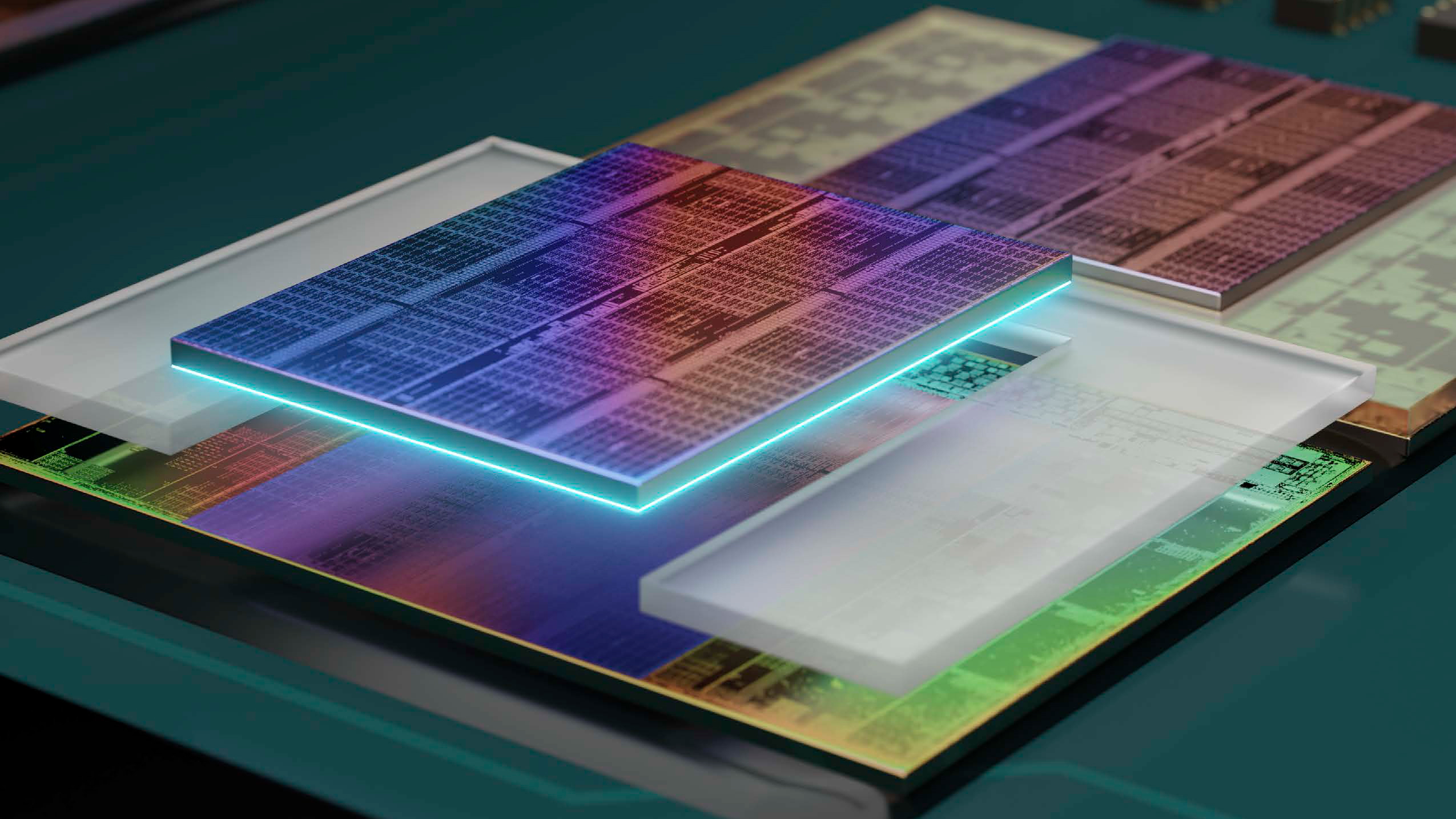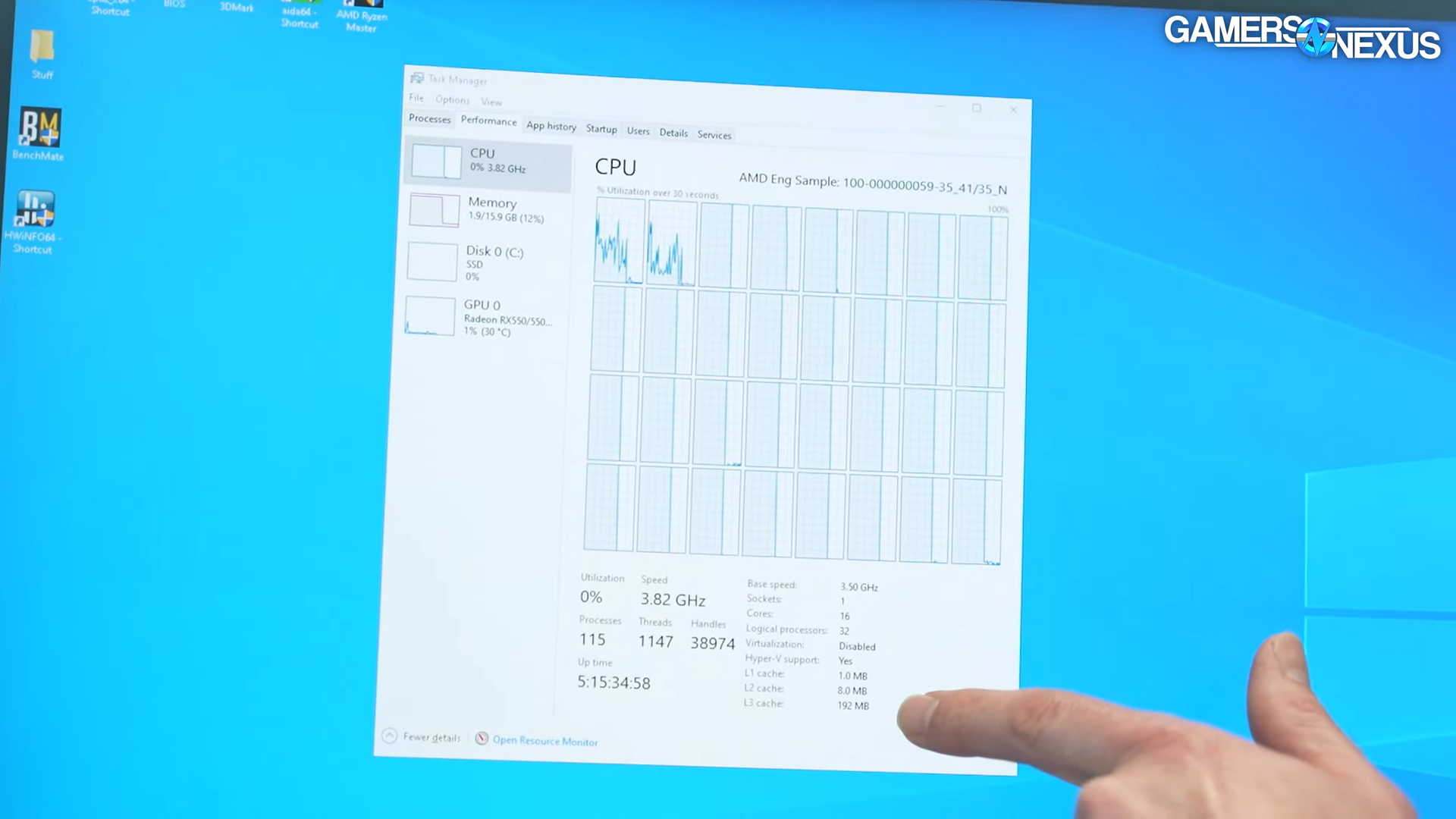AMD Shows Off Original Ryzen 9 5950X3D V-Cache Prototype
16 cores with two V-Cache chiplets were tested, but not realistic for the mainstream market

In an interview with Gamers Nexus, AMD’s Amit Mehra and Bill Alverson shared the origin story of AMD’s 3D-VCache technology and how the technology became present on its mainstream Ryzen consumer desktop platform — including some of the Best CPUs for Gaming. During their discussion with Gamer Nexus’ Steve Burke, the duo showed off prototypes of AMD’s first Ryzen 3D-VCache parts, including 12-core and 16-core models with dual CCD 3D-VCache designs.
AMD’s insight highlights the fact that the company was actually looking into producing high-core count Ryzen 5000 products with 3D-VCache technology as many enthusiasts have theorized. It also confirms that AMD was not architecturally limited to building an 8-core design alone, but had the physical production capability to produce multi-CCD 12-core and 16-core Ryzen 5000X3D chips if it wanted to.
According to AMD’s Amit Mehra, the desktop implementation of AMD’s 3D-VCache technology started as an accident. The original implementation was designed for servers only, with AMD originally only testing 3D-VCache iterations of its EPYC server CPUs.
The reason AMD opted to research 3D-Vcache functionality on Ryzen in the first place, was due to an “accident” during the production of presumably prototype Epyc 3D-VCache chips where 7 CCDs were left over in a batch that couldn’t be utilized in an EPYC chip — since EPYC CPUs required 8 CCDs at the time.
This led Mehra and his cohorts to re-purpose the seven V-Cache-equipped dies for desktop use, building out multiple designs including 8, 12, and 16 core variants. This is what lead AMD to research the capabilities of 3D-VCache in desktop workloads and discover the incredible gaming performance V-Cache offers, giving birth to the Ryzen 7 5800X3D.
AMD showed off two functional high-core counts Zen 3 X3D prototypes to Gamers Nexus, including a 16-core and 12-core model featuring 3D-VCache on both CCDs. The chips were fully functional within Windows actively and were shown actively running an AIDA64 stress test on screen. Bill Alverson showed a glimpse of the chip’s specs in Task Manger, revealing the massive 192MB of L3 cache equipped on both CPUs, thanks to the “dual 3D-VCache” implementation.

Alverson and Mehra didn’t disclose AMD’s exact reasons for not shipping out 12-core and 16-core Ryzen 5000X3D CPUs, however, they did highlight the disadvantages of 3D-VCache on Ryzen CPUs with two CCD, since there is a large latency penalty that occurs when two CCDs talk to each other through the Infinity Fabric, nullifying any potential benefits the 3D-VCache might have when an application is utilizing both CCDs.
Get Tom's Hardware's best news and in-depth reviews, straight to your inbox.
Obviously, at the time AMD didn’t take into account hybrid users that might want a high core count X3D chip for work and play, but it is something they were thinking about and something it rectified with the release of its Ryzen 9 7950X3D and 7900X3D.

Aaron Klotz is a contributing writer for Tom’s Hardware, covering news related to computer hardware such as CPUs, and graphics cards.
-
Unless there are more cache-intensive bottlenecks discovered, going for a dual-CCD 3D V-cache solution will make little sense in the "consumer" desktop space. The technology can only become more useful if there is a use case for it.Reply
These are just engineering sample chips, leftover silicon. Highly unlikely AMD plans to release these chips for the DIY market. -
hotaru251 Reply
many games do.emike09 said:Flight Simulator has proven to absolutely love cache
but as they said the latency hit wouldnt make it worth it. -
g-unit1111 Oh man I would totally buy one if it were made. It would extend the life of my X570 system significantly.Reply -
atomicWAR I wish AMD would launch these old 3d v-cache parts. While on a x670e system myself and I wouldn't need one, alot of my clan members in Clan Atomic are running x470/570 chipsets. I know my clan mates would gobble these up.Reply -
g-unit1111 ReplyatomicWAR said:I wish AMD would launch these old 3d v-cache parts. While on a x670e system myself and I wouldn't need one, alot of my clan members in Clan Atomic are running x470/570 chipsets. I know my clan mates would gobble these up.
I'm looking at upgrading my AM4 rig to AM5 when Ryzen 8000 is out next year. But if AMD did launch say a 5950X3D that would make it so I could keep my existing components longer. One thing is for sure is that my B450 board is definitely nearing the end of its' lifespan. -
ilukey77 Reply
wait for 8950x3d !!Admin said:AMD showed off prototype 12-core and 16-core 3D-VCache designs in an interview with Gamers Nexus, showing it could have produced high-core count Ryzen 5000X3D CPUs if it wanted to.
AMD Shows Off Original Ryzen 9 5950X3D V-Cache Prototype : Read more
mind you there must be diminishing returns on cache at some point !!
where is just doesnt make the game any better !! -
Vanderlindemedia These where actually, engineering left-overs. I mean the best Ryzen CCD's go normally through the Epyc line, the Ryzen's we get are qualified enough but nothing gets lost in the proces really. Engineers are the one's who get to play with these models, and figured out the performance benefits on Games in particular.Reply -
Alvar "Miles" Udell ReplyAlverson and Mehra didn’t disclose AMD’s exact reasons for not shipping out 12-core and 16-core Ryzen 5000X3D CPUs
It's not hard to figure out why: Thermals, clock speeds, and price. It's the same reason the 7800X3D is the buy over the higher core count X3D variants, because outside games, home applications are held back by the lower clock speeds more than they benefit from the extra cache, and this is on top of the reduced clock speeds of higher core count CPUs (although the 5950X has a higher rated boost speed than the 5800X, it doesn't reach it), and the already narrowed market for CPUs with more than 8 cores in the home market without the benefits of more prosumer CPUs like Threadripper (more PCIe lanes, for example).
